Ocean Of Ink
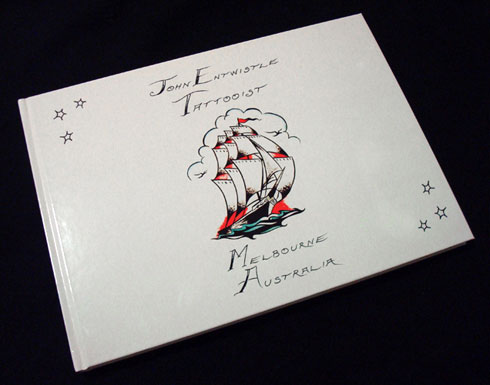
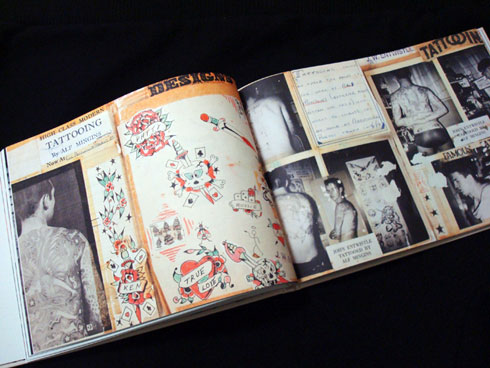
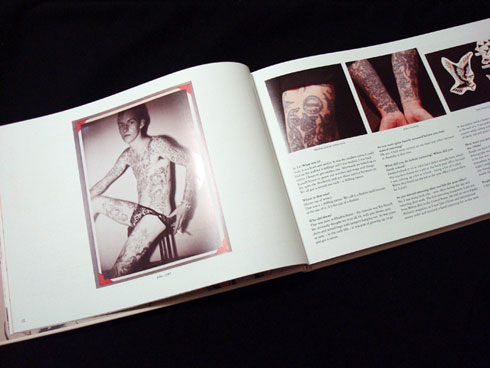
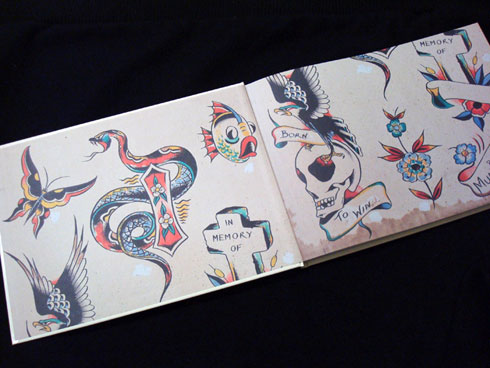
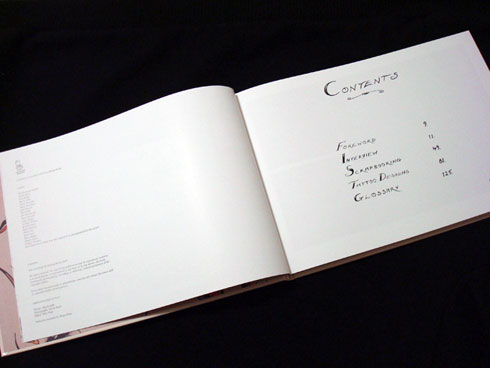
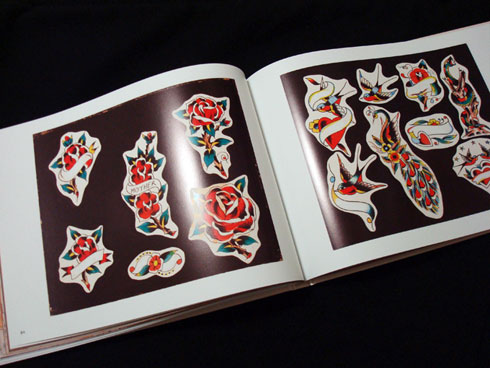
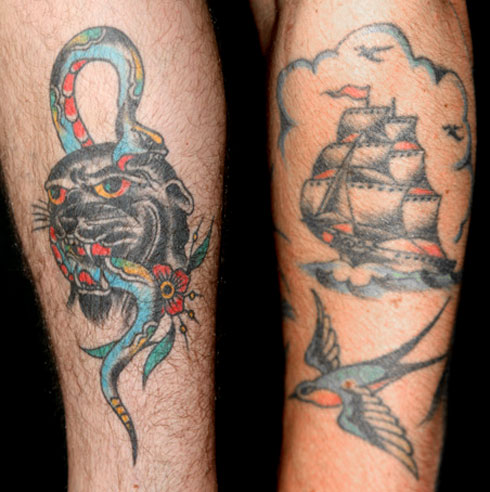
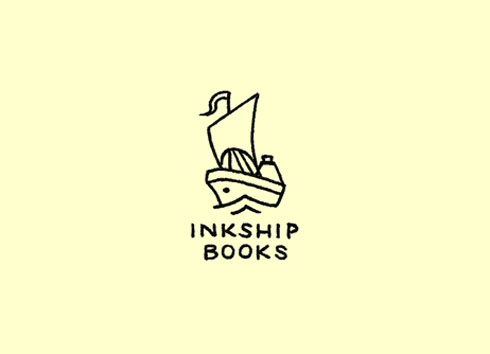 Text: Oliver Georgiou Images: Inkship Books
Text: Oliver Georgiou Images: Inkship Books
In August this year Melbourne based tattoo artists Danny Young (Tattoo Magic) and Jane Laver (Chapel Tattoo) released a biographical book documenting the life and work of John Entwistle, a Melbourne tattooer since the early 1960s. Reading the book feels like opening a pirate’s treasure chest or a message in a bottle type time capsule, filled with amzing visual relics from the past, along with some great stories. Oliver Georgiou sat down with Danny Young in his backyard with a can of Melbourne Bitter to have a chat about how it all happened.
Oliver Georgiou: Is Inkship Books something you thought of to make this book or was it established as part of a bigger motive?
Danny Young: Just out of necessity we had to come up with a name, we didn’t have to but we needed to put a publishing name to it. There were pretty much two options, we were either going to lay it out ourselves and then present it to someone for publishing, but we couldn’t really find anyone suitable. I thought it would be an easy thing, I thought someone would definitely be up for putting it out because the book would be all done for them, not that we looked too hard or knew where to look, but then we thought we would just do it ourselves and then get someone to distribute it and we ended up just doing the whole thing – so then we had to think of a name. We went through a few names and everything was taken. I already had Inkship for my personal website referring to something like an apprenticeship or something-ship. I asked Jane and she didn’t mind so we went with Inkship books and made the logo. We didn’t plan to make a publishing company, it was just for that project. We already have other people asking what else is Inkship going to publish.
OG: I’m personally wondering that.
DY: Maybe, if I’ve got time and a good idea pops up I will do it for sure, yeah.
OG: So if it wasn’t the idea to make this publishing company, or the idea to make books, it was the idea to make this particular book.
DY: I bought my first machine off John, he’s been around selling tattoo supplies and tattooing for a long time, Me and Jane have just been going to him for years to buy stuff and getting tattooed by him, so you know he is one of the last dudes doing that sort of thing. There were other people doing it but he is the last one that you can actually get in contact with or that we know and he is super nice and still sticks to his style and his five colours. So just through getting tattooed and buying stuff off him he always had a few stories and we were always asking him what shops were around or who was tattooing or how did you start and we both sort of ended up a different times thinking it would be good to document it before he is gone, not that we wanted him gone in that way, but nowadays with LA Ink and the Internet and everything it’s all pretty easy and rock starry. Back then there wasn’t all that that sort of stuff so hearing him saying there weren’t appointments and how he was busy all the time or that people came in and picked his flashes it was really interesting and we just thought we better start documenting it before people don’t realise that it existed in Melbourne. There is stuff overseas like Sailor Jerry or people in Europe where it’s all been done but nobody had done it in Australia.
OG: Yeah I thought it was interesting how in an interview in the book he talks a lot about just spontaneously going and getting a tattoo of whatever was on offer and how it doesn’t exist so much these days.
DY: Yeah for sure, not long ago people came in with a heap of notes but now people come in with their laptops show you about thirty ideas and wanna cram it into a tattoo the size of a tennis ball or something. Before it was more like if you were going to get a tattoo you pick something off the wall or the tattooists would say “nah you’ve gotta get this one”. A lot of older people I have spoken to got something that they didn’t ask for, there were no niceties like there is now.
OG: From what you have found out what was the scene like when John started tattooing nearly 50 years ago?
DY: There were about a half a dozen tattooists in Melbourne, a couple in the city, one out in Williamstown and another couple out in the suburbs but only half a dozen shops, there might have been a few back-yarders and stuff but yeah…
OG: Tattoos themselves have been around for a long, long time. I can imagine people in Australia having them prior to that.
DY: Yeah, there is a little bit of history, we have been trying to find out about that too and maybe that is something that we will do because Jane has been looking into it, John knows a lot and we have found a little bit. In Bourke Street what is the Commonwealth Bank now used to be the Southern Cross Building and before that it was the Eastern Markets; there is a little bit of info on a tattooist that was in the markets there in the early 1900s. John was pretty young in the ’60s so we don’t really know too much about before then. Hopefully doing the book it brings other people out with shoeboxes of photos or other info from their granddads.
OG: Does his stance of the whole meaning of tattooing change the way you and Jane approach tattooing yourselves?
DY: There are a lot of reasons why people do or don’t do things but yeah, I think people like Jane and me are sort of more of his view. I am old enough to have grown up when dudes went and got a tattoo on their forearm or whatever, just Bon Scott era and all that sort of stuff. It was just a thing dudes did if you were into rock ‘n’ roll or if you were a bit tough or wanted to be tough or whatever, it wasn’t just a pretty thing at all, or a gallery sort of thing at all. It’s cool that people don’t have to have a big story on Miami Ink about their tattoos “oh, it’s because of this and that”, it’s more like “that looks cool, I wanna get it, I’ll buy that.” Like with a lot of things spontaneity is a big thing so I think what he did was, he was just a worker who did tattoos, when we asked him to do the book he was was just like “ah, OK.” Not that he didn’t want to, he’s just not from that gallery or promotion sort of era. He did tattoos for people who wanted to get tattoos, he got tattooed a lot. Now it’s a bit more an arty thing, people come from art school and want to tattoo and haven’t even got tattoos, John was covered by the time he was 19 and decided that was what he was going to do and just got into it. I suppose we sort of think along the same lines, that’s why we wanted to do the book.
OG: These days there seems to be a lot less stigma surrounding tattoos, what would it have been like getting around with tattoos in past in Melbourne?
DY: I know a lot of people like friend’s dads that don’t want to talk about them or don’t like showing their tattoos because of that stigma. But you can pick whether a person is good or bad regardless of if they have tattoos or not. More often than not though a lot of those older guys you see with tattoos have probably led a different life to what we see, maybe they got in fights lots, maybe they drank a lot or maybe they were in the army.
OG: As a kid I distinctly remember a home made tattoo that my dad had on his hand of an anchor that he had done when he was real young, but he had a diving accident and his thumb got ripped off and the tattoo went with it, I think he was happy to see it go.
DY: A lot of kids now are covered because they are in bands but I reckon a massive percentage of those kids are gonna get to their late twenties and go “fuck what have I done?” Would have been the same for guys from the ’60s or ’70s, they would have got swept up in AC/DC or in their young gangs or whatever was happening and not realising the permanency. You think you know what you were doing when you are 18 but it takes a bit longer to really work it out.
OG I feel that Melbourne being so geographically isolated has given us the opportunity to really cultivate differently over time, whether it is in music or visual arts. Was it the same for tattooing?
DY: I think so, from a tattooists point of view you can sort of pick peoples styles and I think Melbourne had like a real sharp pointy sort of style, as much as they were using the same colours and imagery, John was influenced off local guys and Melbourne sort of had a different look, so yeah I think for sure Australia had its own sort of take on that traditional thing.
OG: You have been travelling a fair bit, being a tattooist full time did you pick up on some differences as you were looking around?
DY: When I was in America the time before our recent trip I booked tattoos ahead and got one in each city I went to, which was five cities. That was a couple of years ago when we went to play I got one in New York, one in Washington, one in Texas, this time around I didn’t book anything. I thought I would get some walk ins and when I got there we went swimming at a few places like rivers and stuff and it was just like, god there are so many shit tattoos and then, I thought, I have friends at home that I would rather tattoo me that I like and wasn’t in a rush to get them done. But there are a lot of good tattooists in America. It’s the same as if you go to the Big Day Out or the beach here you see a lot of bad tattoos.
OG: It’s cool to be able to read a bit of history on peoples skin whether it be an old foot logo or…
DY: …or the Red Hot Chili Peppers in the late ’80s, that era has got a lot to answer for. When we were in the ’80s my friends when they were 15 or 16 got the eagle, got the snake and stuff then when it got to the ’90s people started doing this real tech bio stuff, didn’t like their eagles and got them covered up and now wish they had have kept them.
OG: I recently was speaking to a mutual friend of ours that you tattoo and he mentioned that he wanted to get a tattoo of a dolphin having sex with a unicorn on his arse.
DY: He hasn’t asked me about that one, maybe he knows not to. I might give him a gift certificate for his birthday.
OG: To catalogue and document other peoples work is in a way a very noble thing to do. To find something that you have seen and that you have enjoyed and then to spread that is in a way contributing to history.
DY: It’s definitely not a monetary thing or a claim to fame thing. I’ve gone over it in my head with lots of other things, like why am I doing this or why do we do these kind of things, it’s more because when I was growing up I was stoked on certain bands or stoked on certain people’s artwork or something, so that gets me keen and allowed me to do the things that I have done. I might speak to a kid who is like “oh I saw that and it made me want to do this…” If you can inspire people do things that they want to do, that’s a good thing and the feeling that maybe if I wasn’t going to do it might to get done sort of thing. Marty Bell gave me a book called Top Fellas and I probably wouldn’t have found it, it was a book on the Sharpies around the ’60s, ’70s and ’80s in Melbourne, just a little book by some guy who wrote down all these tales, interviewed some people and put some photos in, and I thought ‘oh sick I sort of grew up with that and it’s awesome that some guy has gone and done this’. It touched on tattooing a little bit and that was one thing that made me think ‘oh you know no one has done this about Melbourne tattooing’. John has got good things to say, I know there are people like me that like John’s stuff or this way of tattooing, not saying it’s the right way or for everyone. And when John goes I didn’t know if there would be anyone else who would follow it up so I thought, ‘oh shit we should show people this because he had so many of his old drawings and info’. So it was just a cool thing to do… I think so, yeah.
John Entwistle – Tattooist – Melbourne, Australia is available online at Inkship Books and from:
Tattoo Magic, 100 Gertrude St, Fitzroy
Chapel Tattoo, 155 Chapel St, Prahran
Johnny Dollar Tattoo Supplies, 207 Punt Rd, Richmond
Artisan Books, 159 Getrude St, Fitzroy
Next story: Off The Chain – Rob McLeish



